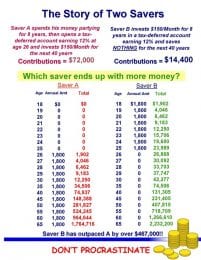
Natural disasters are a tragedy to all involved, especially when they hit close to home. Events such as tornados, hurricanes, earthquakes, floods and fires all have the potential to change the financial course of those that they impact. When such events occur, it’s important to remember there are resources available to help you stay on track with your goals and hopefully minimize the impact you feel financially.
As we all know, Manhattan has been recently been impacted by a natural disaster of its own. The flooding, caused by a downpour of nine inches of rain, forced over 300 people to evacuate and resulted in over 3,000 power outages. Most of those evacuated escaped their flooded residence with a few prized possessions and the clothes are their back. The flooding came as a surprise to the community, which caught many victims off guard. Situations like this are when it’s helpful to have resources available in the community and around campus to assist you.
One of those resources is the American Red Cross. When a natural disaster occurs, the first thing you want to do is register with the Red Cross. They will initiate the first steps of recuperating the costs it will take to repair your home and belongings by checking your home and seeing if it will qualify for financial assistance.
Another resource available to students impacted is the Cats’ Cupboard food pantry. The Cats’ Cupboard is open to all K-State students and offers items such as food, hygiene, and cooking equipment. Students are welcome to use this resource as often as they see fit. They are located in the basement of Fairchild in room 009. Cats’ Cupboard is also always open to donations as well. If you are able to help out, they have a list of needed items on their website, https://ksu.edu/cats-cupboard/.
Another resource on campus is the Office of Student Life. They help students accurately access their situation, provide information, and teach the skills needed to navigate crises. This service is also available to all K-State students at no cost.
Numerous other organizations were offering assistance during the flood, and are available to all times to those in need. Shepard’s Crossing offers assistance to Riley County or St. George residents unable to pay their electric or gas bill, rent, or subscribed medicine bills. The Salvation Army provides a variety of basic living needs from things such as school supplies to clothing. Manhattan also has a FIT Closet which has clothing for all ages.
For financial assistance, the Office of Student Financial Assistance offers many resources that can be of benefit to students throughout their time at K-State. They award more than $230 million in scholarships and financial aid every year. However, their primary focus is to guide each student through this process. To effectively do so, every student at K-State is assigned a personal financial aid advisor based on the first letter of their last name. The advisors offer information such as how to fill out scholarship applications and how to complete the Free Application for Federal Student Aid (FAFSA).
Last, but certainly not least, is Powercat Financial. We offer free information and education to students on topics such as budgeting, student loans, managing debt, credit, and transitioning into work. If you’re ever stuck in a financial crisis of any sort, or simply have a financial question you are curious about, please schedule an appointment with us at https://ksu.edu/powercatfinancial/. We’d be more than happy to guide you through the process and get you back on your feet.
Kaden Stein, Peer Counselor II
POWERCAT FINANCIAL
302 K-State Student Union, Third Floor
918 N. 17th Street
Manhattan, KS 66506-2800
785.532.2889
www.k-state.edu/powercatfinancial
PowercatFinancial@k-state.edu




